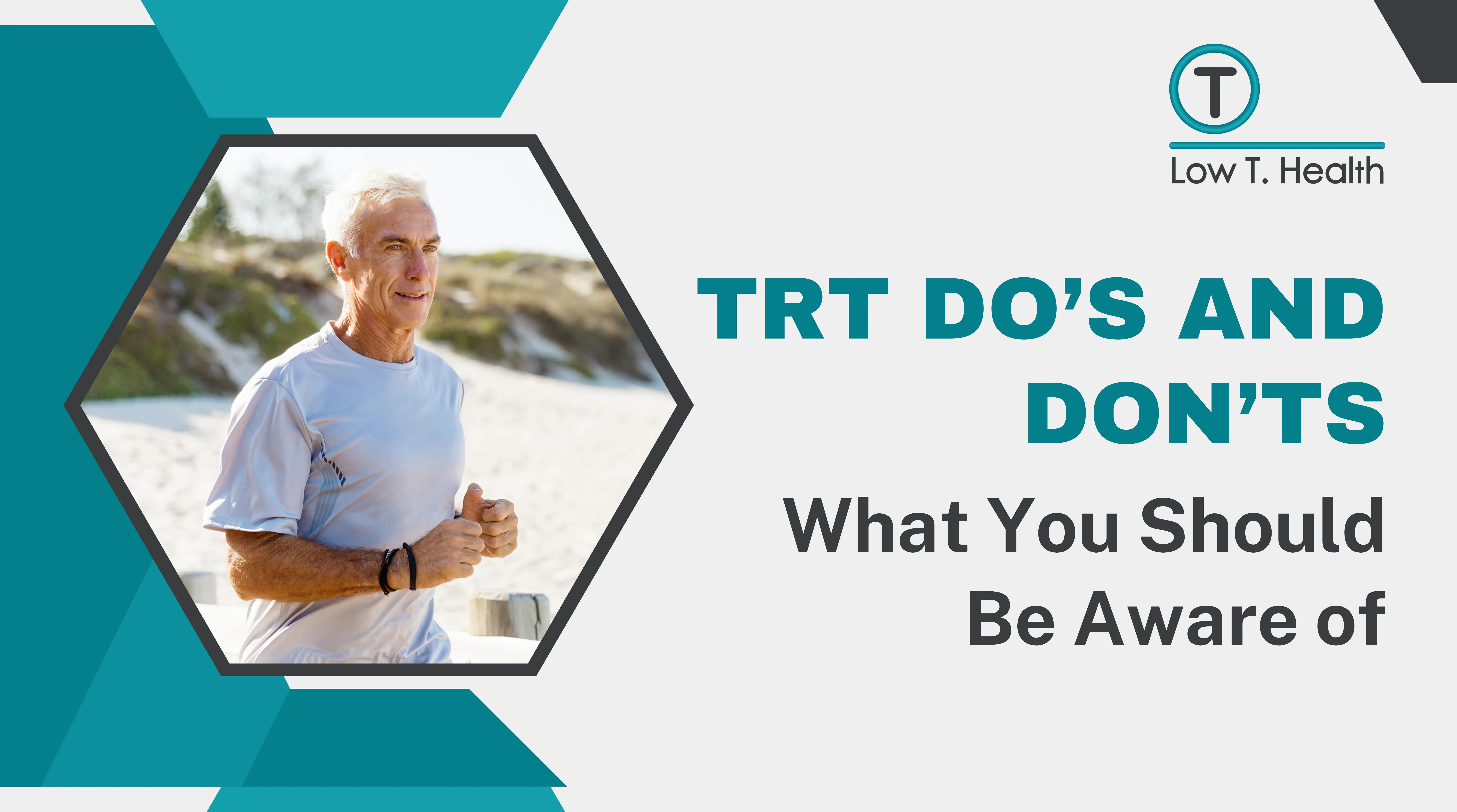Testosterone Replacement Therapy (TRT) can be a game-changer for those experiencing low testosterone levels, offering benefits like increased energy, improved mood, and enhanced muscle mass. However, as with any medical treatment, there are essential dos and don’ts to ensure it is both safe and effective. Understanding these guidelines is crucial for anyone considering or currently undergoing TRT.
From choosing the correct dosage to monitoring potential side effects, being well-informed can help maximize the therapy’s benefits while minimizing risks.
Finding a TRT provider is simple using any search engine. Try searching for terms like “contact for TRT in Cincinnati“ to get started.
Common reasons for undergoing TRT
-
Hypogonadism:
This is a medical condition where the body produces insufficient testosterone due to issues with the testicles or pituitary gland. TRT can help normalize testosterone levels and alleviate symptoms associated with hypogonadism.
-
Age-Related Decline:
As men age, testosterone levels naturally decline. Some men choose TRT to combat symptoms of aging, such as decreased energy, reduced muscle mass, and diminished libido.
-
Low Libido and Sexual Dysfunction:
Men experiencing reduced sex drive or erectile dysfunction due to low testosterone levels may opt for TRT to improve their sexual health and performance.
-
Mood Disorders:
Low testosterone levels can contribute to mood swings, depression, and irritability. TRT can help stabilize mood and improve overall mental well-being.
-
Decreased Muscle Mass and Strength:
TRT for muscle gain, Men who notice a decline in muscle mass and strength often use TRT to enhance their physical performance and physique.
-
Bone Density Issues:
Low testosterone levels can lead to decreased bone density, increasing the risk of osteoporosis and fractures. TRT can help maintain bone health and reduce these risks.
-
Fatigue and Low Energy:
Chronic fatigue and reduced energy levels are common symptoms of low testosterone. TRT can help restore energy levels, improve sleep quality, and enhance overall vitality.
The Dos of TRT
-
Consult a Specialist
- Do seek a qualified healthcare provider: Ensure that you consult with an endocrinologist or a urologist experienced in hormone therapy.
- Do get a proper diagnosis: Have comprehensive blood tests to confirm low testosterone levels and rule out other conditions.
-
Regular Monitoring
- Do schedule regular follow-ups: Regular monitoring of testosterone levels, hematocrit, PSA (Prostate-Specific Antigen), and other relevant markers is crucial.
- Do keep track of symptoms: Monitor any changes in symptoms and report them to your doctor.
-
Informed Decision
- Do educate yourself: Understand the benefits, risks, and potential side effects of TRT.
- Do consider lifestyle changes: Sometimes, lifestyle changes such as diet, exercise, and sleep improvements can enhance the effectiveness of TRT or even alleviate symptoms without it.
-
Follow Prescribed Protocols
- Do adhere to the prescribed dosage: Follow your doctor’s instructions regarding dosage and frequency.
- Do use the prescribed method: Whether it’s injections, gels, patches, or other forms, use the method prescribed by your doctor.
-
Health and Safety
- Do maintain a healthy lifestyle: Exercise regularly, eat a balanced diet, and avoid smoking and excessive alcohol consumption.
- Do stay hydrated: Proper hydration is essential for overall health and can support the effectiveness of TRT.
- Do be aware of side effects: Report any adverse reactions, such as mood changes, sleep disturbances, or skin reactions, to your doctor immediately.
-
Communication
- Do communicate openly: Keep an open line of communication with your healthcare provider about how you’re feeling and any concerns you may have.
- Do involve your partner: If you have a partner, involve them in the process, as TRT can affect your relationship dynamics and sexual health.
The Don’ts of TRT
-
Don’t Self-Diagnose or Self-Treat
- Professional Diagnosis: Always seek a professional medical diagnosis before starting TRT. Self-diagnosing low testosterone based on symptoms alone can be misleading.
- Prescription Medications: Only use testosterone prescribed by a healthcare provider. Self-treating with testosterone obtained from non-medical sources can be dangerous.
-
Don’t Ignore Side Effects
- Monitor Health: Regularly monitor for side effects such as acne, sleep apnea, breast enlargement, or significant mood changes. Report any side effects to your healthcare provider promptly.
- Medical Follow-up: Regular blood tests and check-ups are crucial to monitor testosterone levels and overall health.
-
Don’t Exceed Prescribed Dosage
- Adhere to Dosage: Stick to the prescribed dosage and administration schedule. Overuse can lead to serious health issues like cardiovascular problems or hormone imbalances.
- Avoid Cycling: Do not engage in testosterone “cycling” (periodically stopping and starting treatment) without medical advice, as this can disrupt your hormone balance.
-
Don’t Neglect Underlying Health Conditions
- Address Root Causes: Ensure that underlying health conditions causing low testosterone, such as obesity, diabetes, or thyroid problems, are also addressed.
- Comprehensive Health: Maintain a healthy lifestyle, including a balanced diet and regular exercise, to support overall health and improve testosterone levels naturally.
Conclusion
Guiding the dos and don’ts of Testosterone Replacement Therapy (TRT) is crucial for achieving optimal health outcomes. Ensure you follow medical advice, undergo regular monitoring, and maintain a healthy lifestyle to enhance the benefits of TRT. Avoid self-medicating, ignore potential side effects, and neglect routine check-ups to prevent complications. By staying informed and cautious, you can maximize the advantages of TRT while minimizing risks, ensuring a balanced and practical approach to managing testosterone levels.


